Minoan Pompeii: a mysterious city on a mysterious island
Ancient civilization. In our cycle of acquaintance with ancient culture, four materials have already been published: “Croatian Apoxyomen from under the water. Ancient civilization ", “Homer's poems as a historical source. Ancient civilization ", “Gold for war, the fourth wonder of the world and Ephesus marble” и "Antique ceramics and weapons". Recently, one of the readers of VO wrote in his comment that it would be nice to return to this topic. Indeed, why not come back, because for us Europeans, antiquity is the basis of everything. However, today we will try to dive a little deeper, so to speak, to the origins of ancient Greek ancient civilization. And our story will go about the ancient city of Akrotiri on the island of Fera (or Santorini).
People learned about the existence of this city, located on the volcanic island of Santorin, in general, quite some time ago, back in the middle of the 1901th century. But they didn’t dig. Naturally, they did not know what was underground. But, as it usually happens, each of them buried in the land of Troy had his own Schliemann. In our case, it became the Greek archaeologist Spiridon Marinatos (1974-XNUMX).
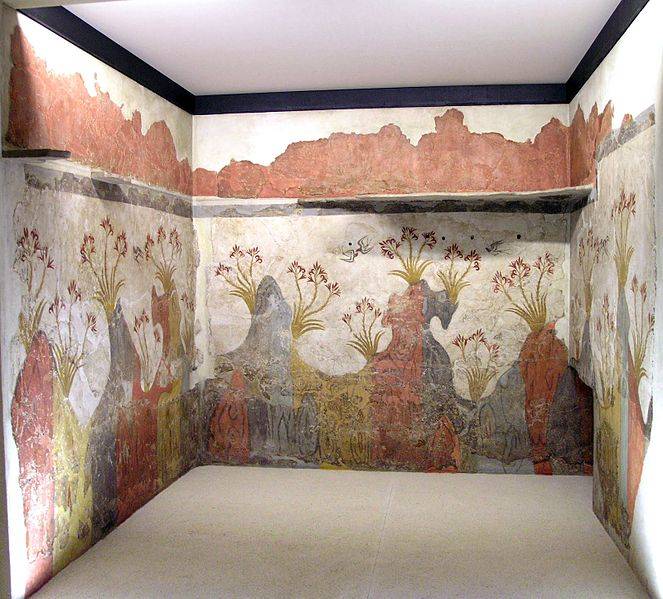
It was he who hypothesized that the Minoan civilization and settlements on the island of Crete died as a result of the eruption of a volcano on the island of Fera (Santorin). In 1939, in England in the Antiquity magazine his article was published about this, but with the reservation of the editor, that "only excavations will be able to confirm their justice." But then the war began, everyone was not up to the excavations. In Greece, there was also a war, and then it was replaced by a civil war. And only in the spring of 1967, when the military dictatorship of the "black colonels" was established in Greece, Spiridon Marinatos, who had already become an academician, was appointed general inspector of antiquities.
A state investment program was adopted, which allowed to begin the museumification of monuments in the open air, new excavations and exhibitions. Visiting Santorin, meanwhile, Martinatos interviewed local farmers, and they told him where, after heavy rains and floods, “antics” appeared from the earth.
Now he could not only manage the excavations of the Archaeological Service of Greece, but also receive funding for them. The "colonels" had an obvious need to demonstrate their "virtue" to the whole world - and Martinatos managed to get unprecedented funds for this business.
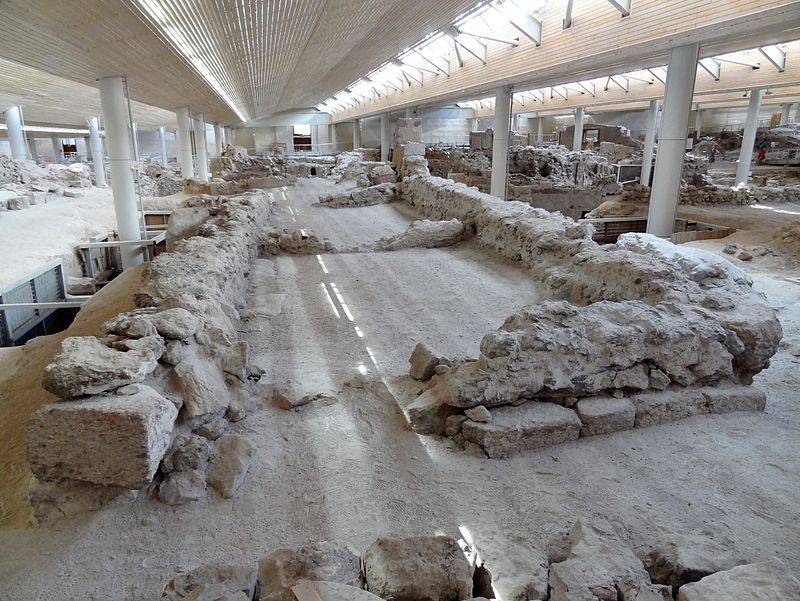
A place was chosen on the south coast of the island near the village of Akrotiri, just opposite the island of Crete, which is often even visible from it, especially in fine sunny weather. But in the past, sailors just sailed just like that - from island to island within the line of sight. And here they were already digging in 1967, the French and Germans even found something. But they did not conduct such large-scale excavations. But Martinatos started them and immediately discovered a huge settlement of their multi-storey buildings (destroyed, of course), hidden under a layer of petrified volcanic ash. And only then he realized how incredibly lucky he was!
The houses were built using wood and clay. If they had not been hidden by the ashes, but remained on the surface, nothing would have remained of them for a long time! And then he came up with a wonderful, albeit very expensive thought: to cover the entire excavation area with a roof, and under its protection, no longer afraid of the elements, dig and dig. As was planned, it was done! In dictatorships sometimes it’s good!
The first excavations were carried out in 1967, and he dug and dug until in October 1974 ... he was gone. But by this time he had already managed to cover a site with an area of more than a hectare and discover dozens (!) Of buildings, of which he managed to carefully excavate four.
Since then, excavations at Akrotiri have been ongoing! Continuously! Although their intensity after the “colonels” were driven out, it slightly decreased. And the matter is not even in the allocated money, since the flow of tourists there does not dry out. The problem is how to save everything already excavated, describe, study and restore.
Modern science and new technologies today provide a truly fundamental approach to the restoration of artifacts. Now it does not come down only to the description, sketching and photographing of the finds, as it was during the time of Agatha Christie, who was doing all this with her husband, but also to recovering the finds from the fragments found. Now the study of ancient techniques, technologies and materials is being conducted with the aim of learning as much as possible about the thing itself and about its era. It was decided that the restoration should begin already at the excavation stage, while all fragments of the thing are right in front of the eyes, and not transferred to the museum, where its employees can do this many years later!
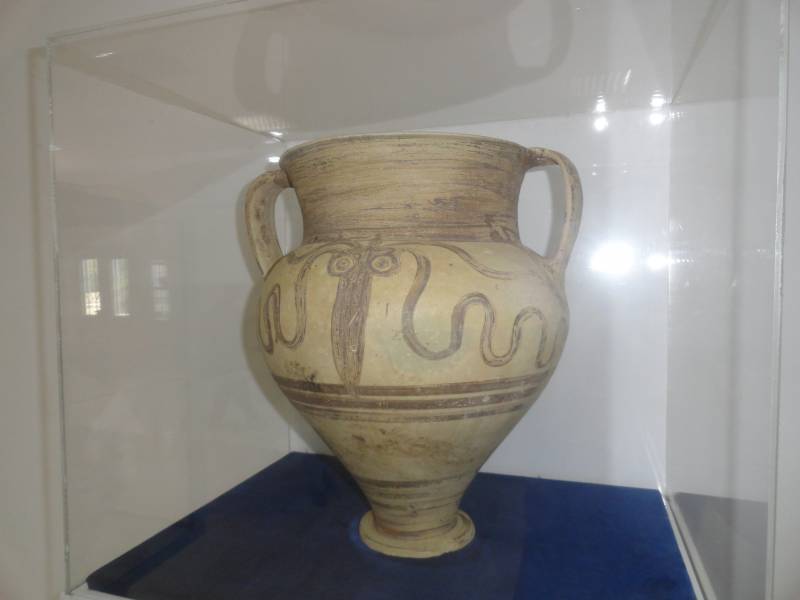
It turned out that here in Akrotiri under a thick layer of volcanic pumice and pozzolana (a mixture of ash and pumice) are the real Pompeii, only much more ancient, where everything has been preserved intact for many millennia!
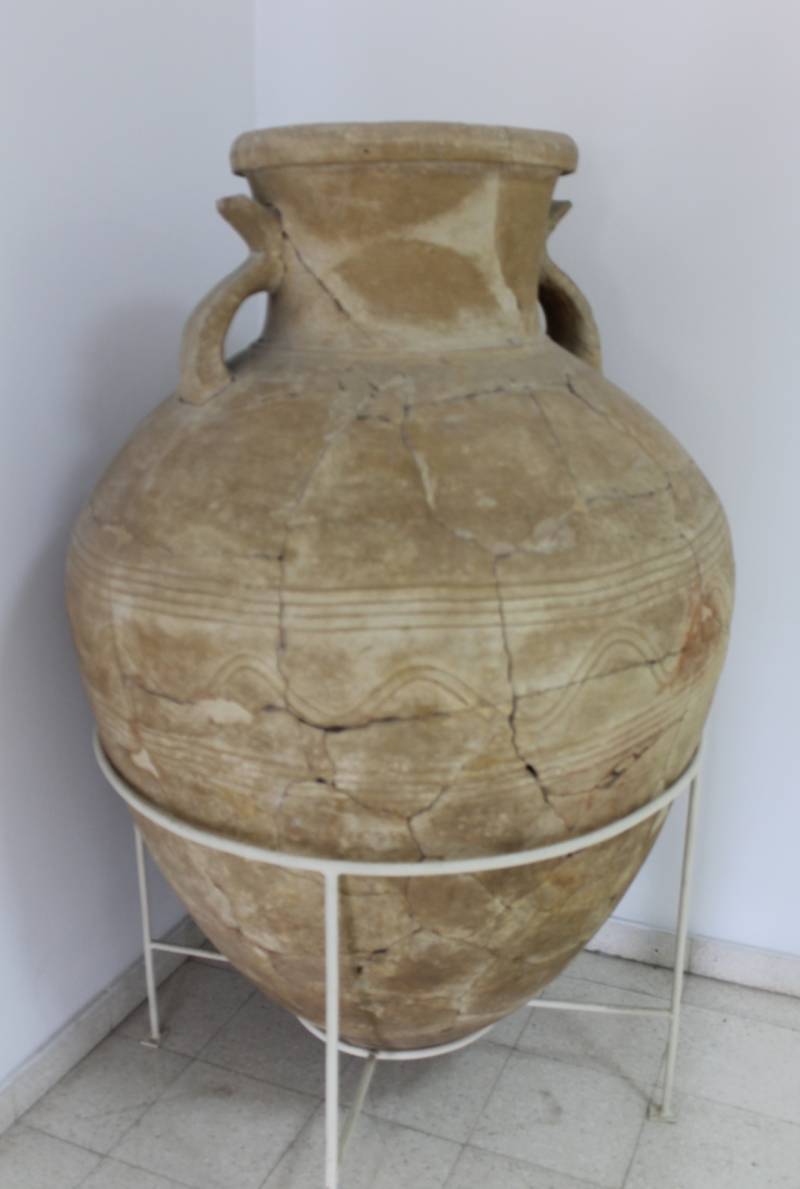
As a result, Akrotiri was just a godsend for scientists of various specialties. Not only archaeologists came here, but also paleozoologists (those who study ancient animals, the bones that are found here), paleomalacologists (those who study ancient mollusks - their shells were also found), paleoichthyologists, paleoentomologists and paleobotanists - after all, literally survived under the ashes all! There was a unique opportunity to find out what the ancient Minoans ate and drank, what plants were bred, and even what they hurt ...
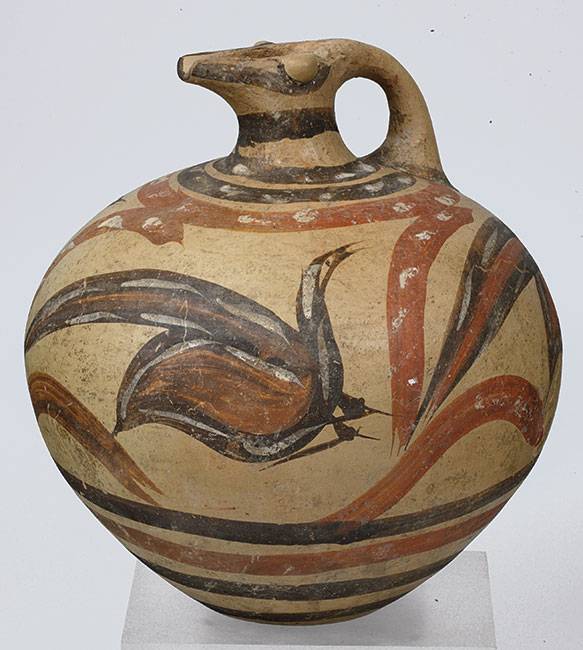
Moreover, the area is seismically dangerous! There were earthquakes in 1999 and 2007, and it was necessary to strengthen the roof, and then replace it, since previously used asbestos cement slabs were dangerous to health.
But then again, as often happens, there would be no happiness, but misfortune helped. To put the pillars under the new roof, it was necessary to dig 150 (!) Pit mines with a depth of 20 m, penetrating through the entire excavation. And these pits made it possible to obtain a complete stratigraphy of the settlement, that is, to see all the soil layers and, accordingly, all phases of the existence of this settlement. Judging by them story Akrotiri counts at least three and a half thousand years!
It turned out that this place was inhabited already in the Neolithic era (mid-Vth millennium BC) and further in the Eneolithic and Bronze Ages people lived here until the fateful eruption of the volcano. Many of the findings in Akrotiri are simply impressive. For example, stone pythos was found here - a vessel for grain 1,3 m high, made of andesite, the strongest rock. And it weighs so much that it was clearly made on the spot, because such a drive from somewhere - do not love yourself. It is clear, of course, that it was laser-cut by representatives of the most ancient civilization of the antediluvian historical period, but in the workshop where such vessels were made, no wiring was found, alas! (Warning, this is a joke of the author!)
And many ordinary ceramic vessels were found, both here and in neighboring Crete and Cyprus, that is, that there was one civilization here, no doubt. They found a vessel that served as a hive with the remains of honeycombs, and fish bones were found inside many vessels. So, they salted or pickled the fish in them.
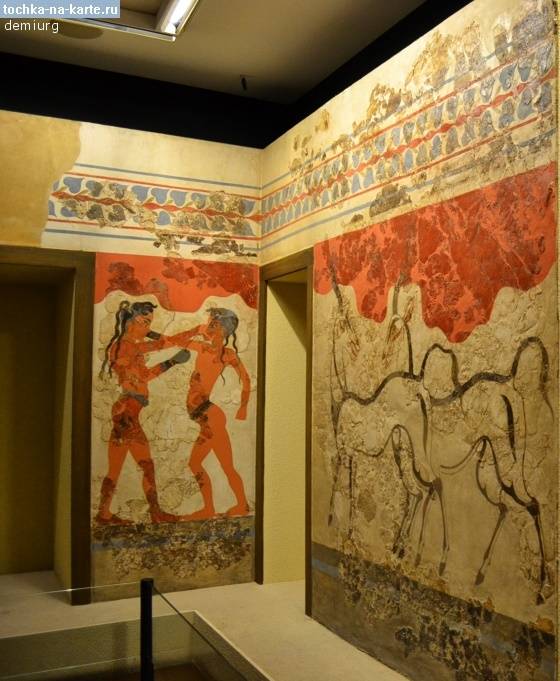
It turned out that the area of Akrotiri settlement, occupying 20 hectares, was the city center. However, the agora (the main square) were never found. But, nevertheless, this is a real city with a very high level of improvement. The streets have pavements covered with stone or cobblestone, along them sewer drainage channels blocked by slabs are laid, the houses have sanitary rooms connected to the street system. That is, all this was built not by sight, but according to a single plan and with clear coordination. And there is coordination, which means that there are people who carry it out, that means there is power. The city found many dwellings of artisans. These are builders, masons, blacksmiths, shipbuilders, artists, sailors, potters, that is, people not related to agriculture. So someone fed them. That is, there was a market where these people bought life support products for their services, and someone brought these products here somewhere and exchanged them for these services. And if so, then this settlement is clearly not a rural community, but a city.
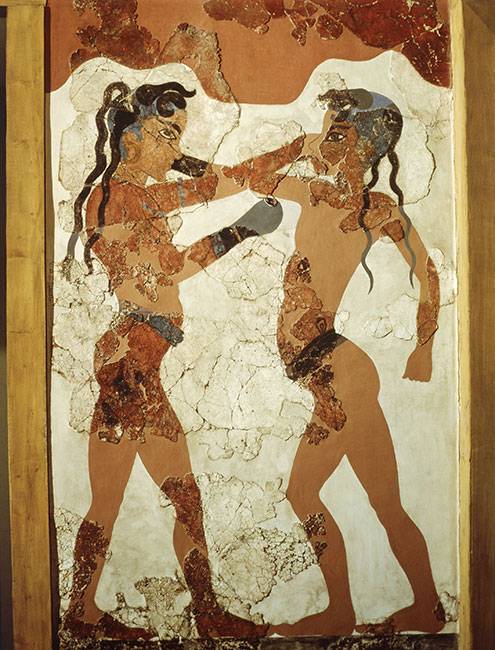
But the political structure of this city is still unclear. There are no "palaces" characteristic of the island of Crete, or they have not yet been found. There is not a single building that can be called the ruler’s house, and only one building claims (and no more) a cult character. All houses demonstrate approximately the same level of culture and, most importantly, the income of their inhabitants.
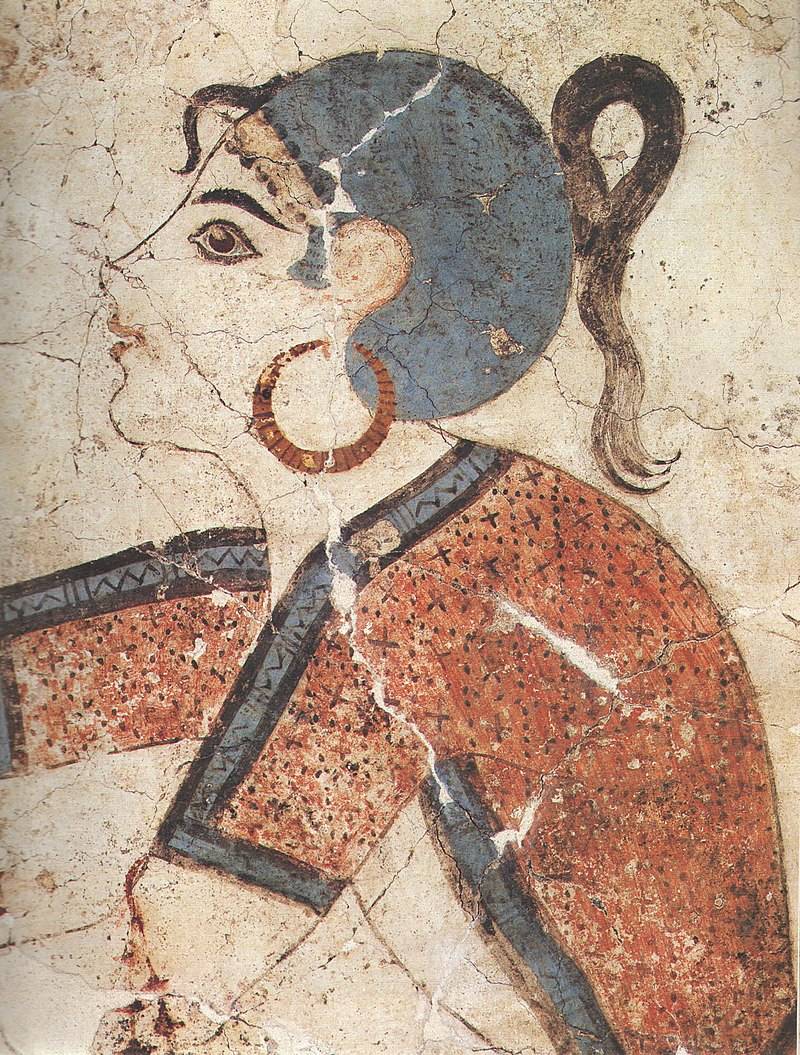
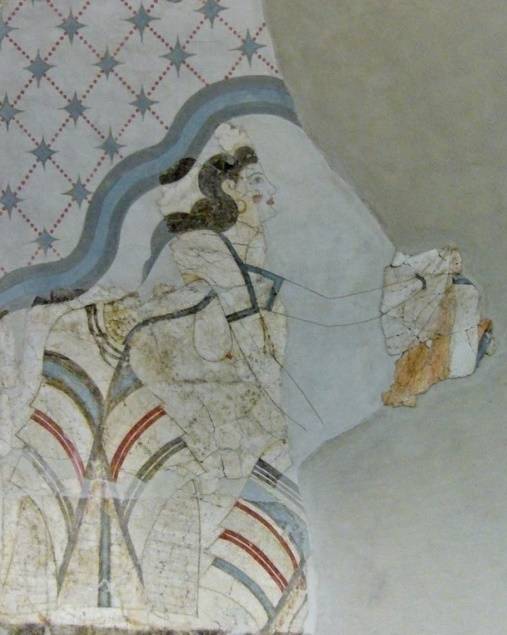
Another interesting fact. Coal paleobotanists determined which wood was used by the inhabitants of the city and which woody cultures grew here. And here there grew a pistachio tree, palm tree, tamarisk, oleander, pine. You can’t cut long logs from them. So, for ships and houses, logs had to be bought in Crete, in continental Greece or in Lebanon. And import. That is, trade with different areas of the Mediterranean was very developed. Food For the sake of growing figs, sesame seeds, almonds, olive, figs, grapes, barley, lentils - a total of more than 50 species of cultivated plants.
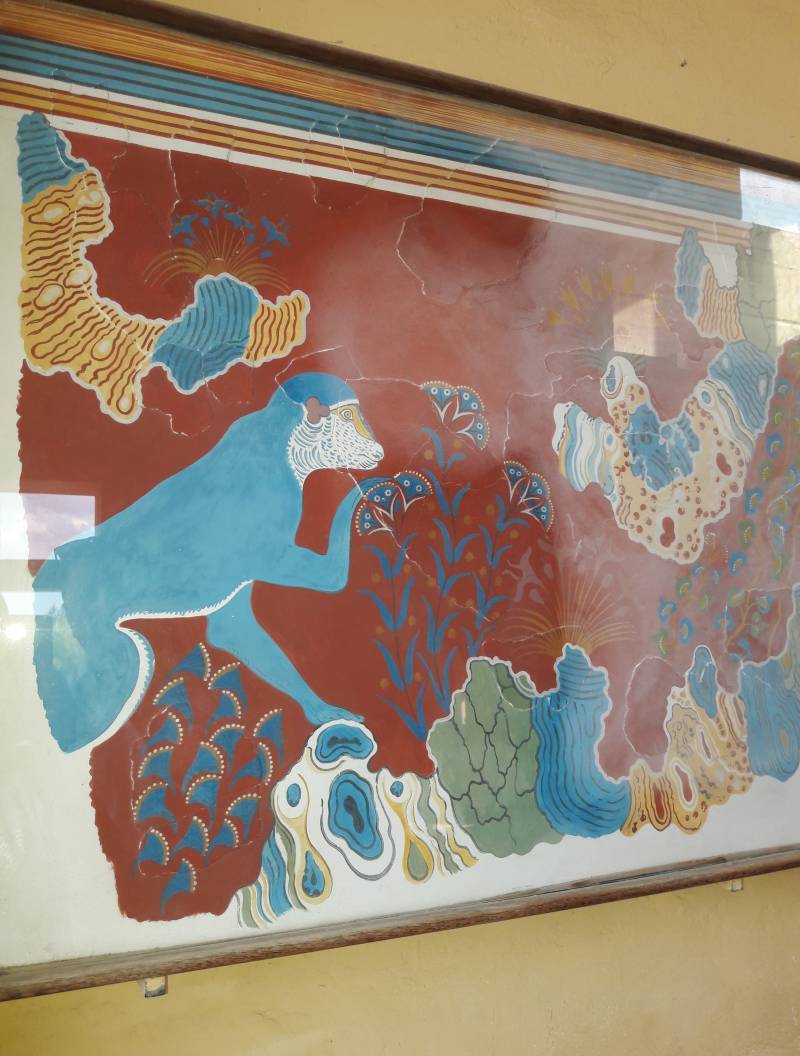
Archaeologists did not find the remnants of the fabric, but from something the inhabitants of Akrotiri sewed sails for their ships and what did they dress in? It is well known that clothes were dyed yellow (saffron) and purple (findings of purple shells). Weights from looms, by the way, also found ...
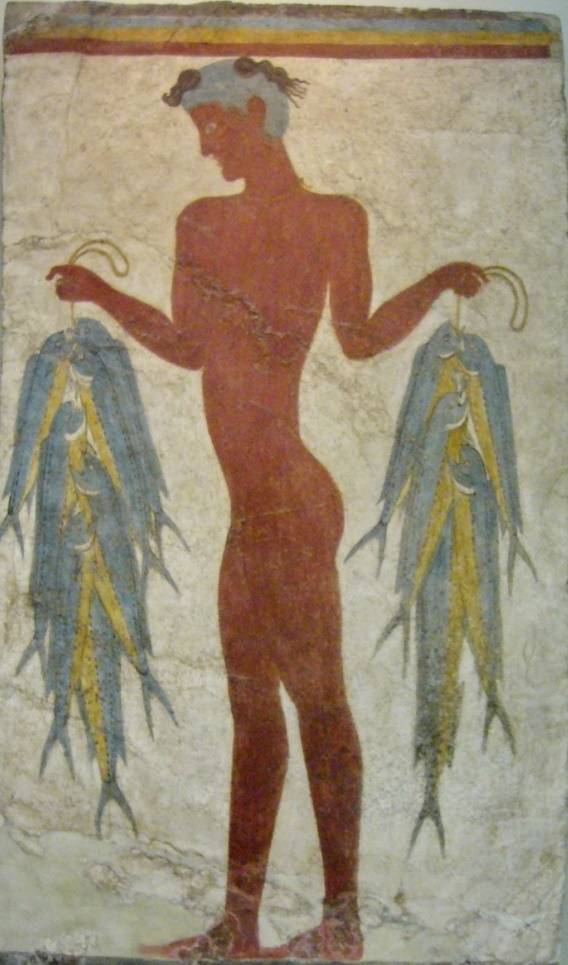
But the most important thing in Akrotiri is still not finds, but wall paintings. The fact is that the houses in the city were, as a rule, two-story, and so, not a single house was found where at least one room would not have any murals! It was as if the inhabitants of it were only doing that they painted their houses from the inside and boasted of each other with these “pictures”, although maybe that was how it was, and people stood out by inviting a more famous and talented artist or ordering a completely original painting - not like everyone else! Interestingly, this kind of "rivalry" has never been seen anywhere else in the Aegean world. Only here, only at this time! In one of the largest excavated houses, to which S. Marinatos conditionally gave the name "Admiral’s house", they found, for example, images of fishermen with a catch, a young priestess, and a fresco with ships and a battle amazing in realism. Well, frescoes with monkeys and wild cats directly speak of trade with Egypt and Syria. They weren’t closer then!
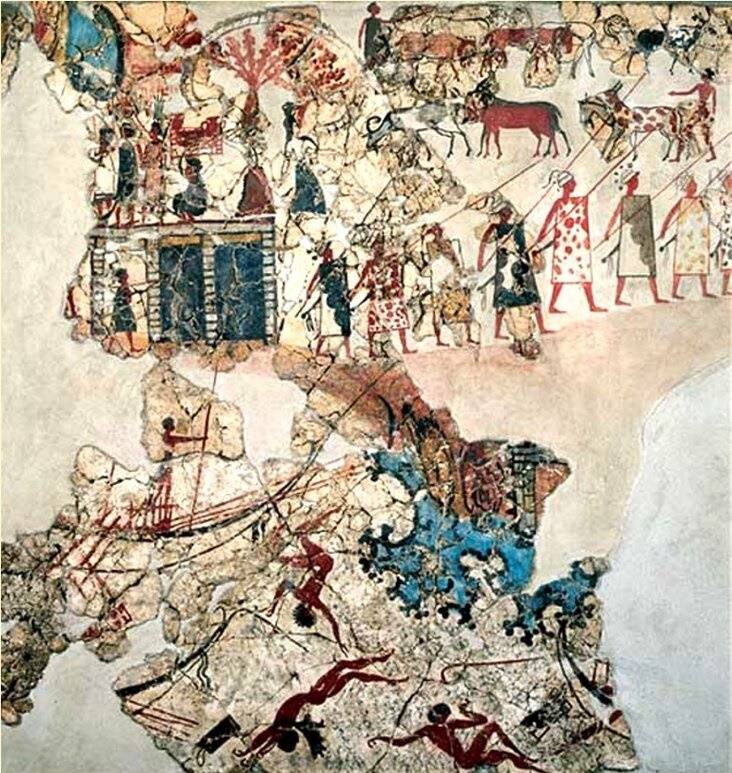
The city lived and developed until 1500 BC. e., when on the island of Santorin (or Fera) there was a terrible eruption of a volcano. At first there was an earthquake that destroyed the city. But the inhabitants escaped and began to rebuild it, and they worked quickly: archaeologists did not find human remains under the rubble of the buildings. That is, they managed to extract them! Life began to gradually return to its usual course, but then the volcano woke up. It all started with the release of gases, then a layer of ash fell on the city (the thickness reached 2-2,5 cm). Then a pumice stone flew from the volcano, the thickness of which was already about a meter. Finally, at the vent itself, a layer of fine ash reached 60 meters, and near Akrotiri - 6-8 m. It is interesting that this ash was found even in the ice of Greenland, that was the power of this eruption! Then Mount Santorin failed, and in its place a huge caldera was formed, filled today with the sea, and people just forgot that there used to be a flourishing civilization!
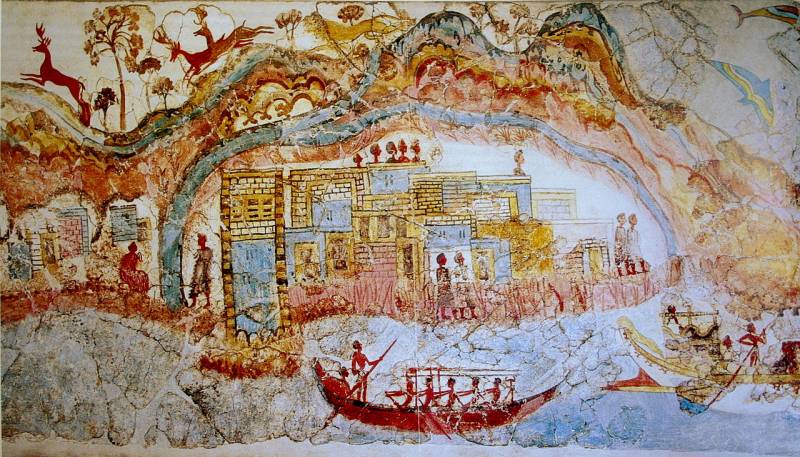
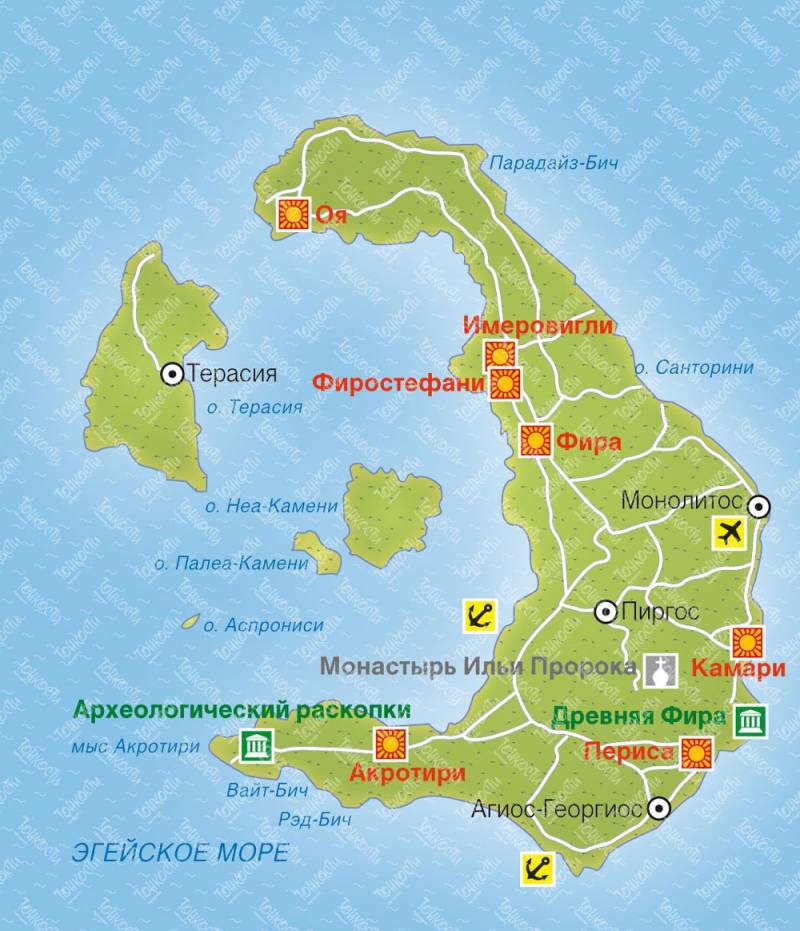
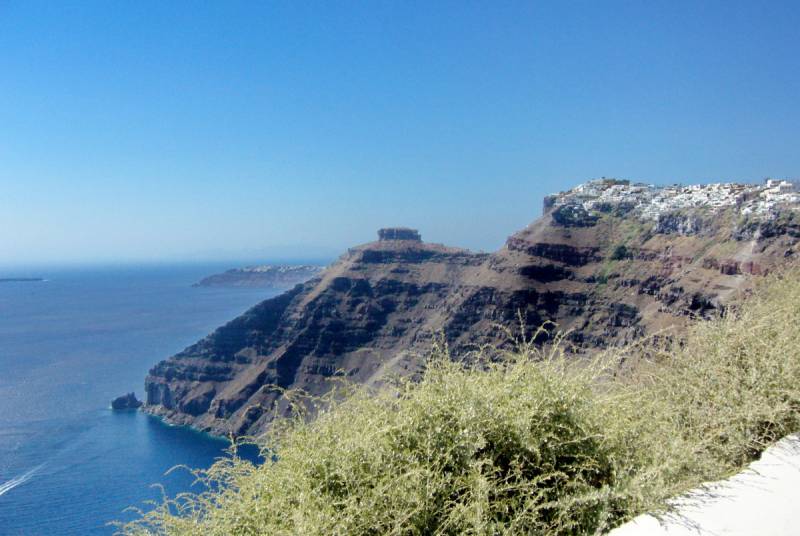
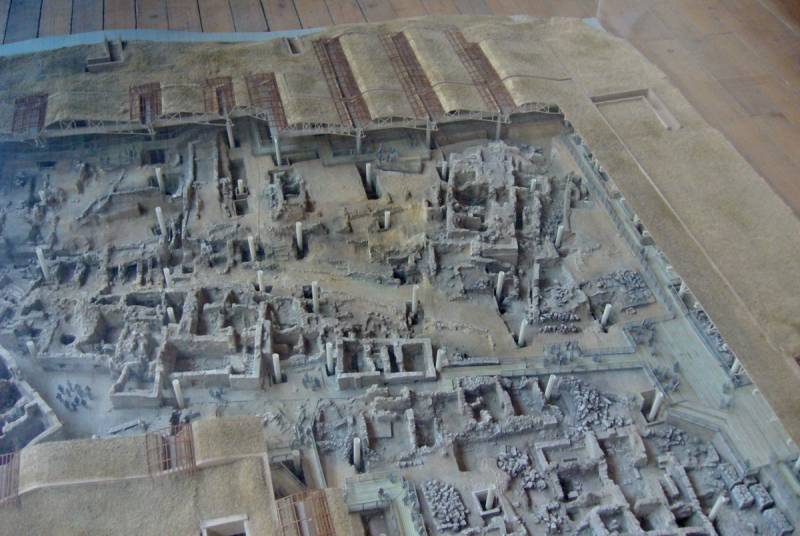
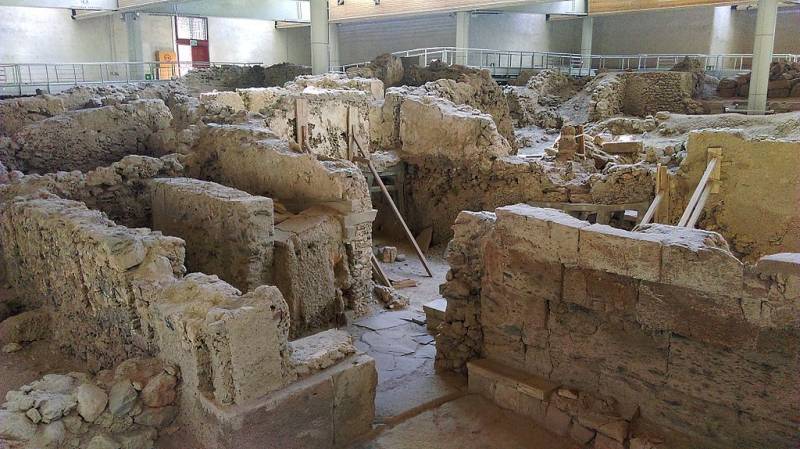
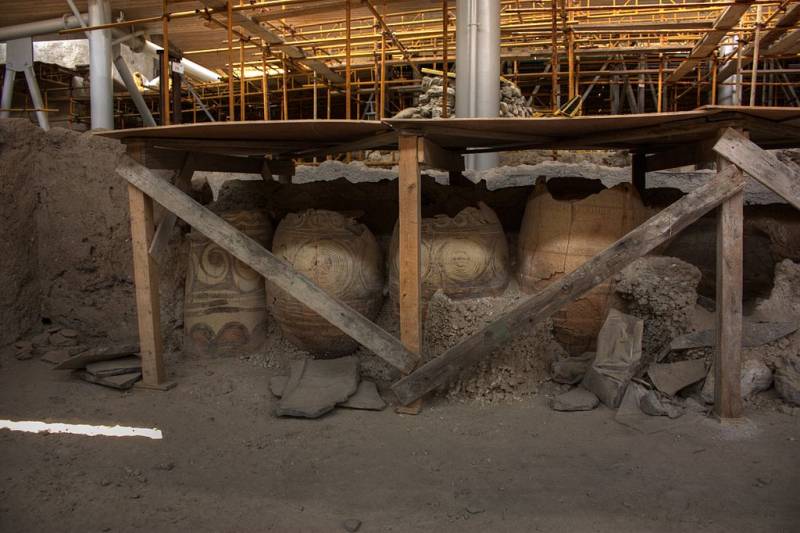
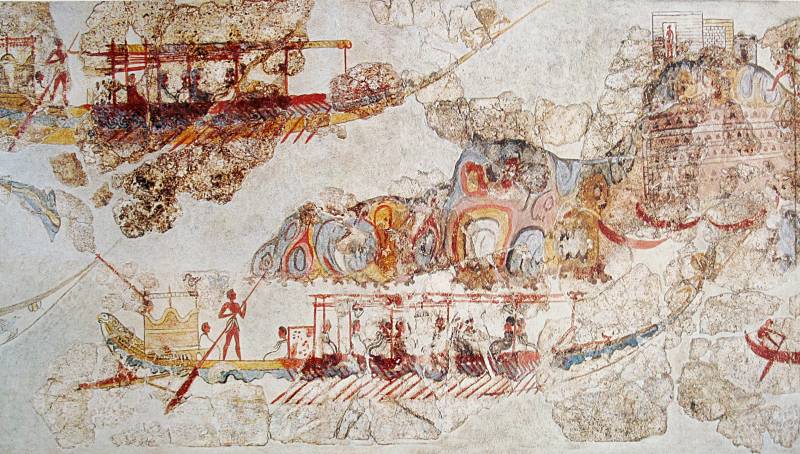
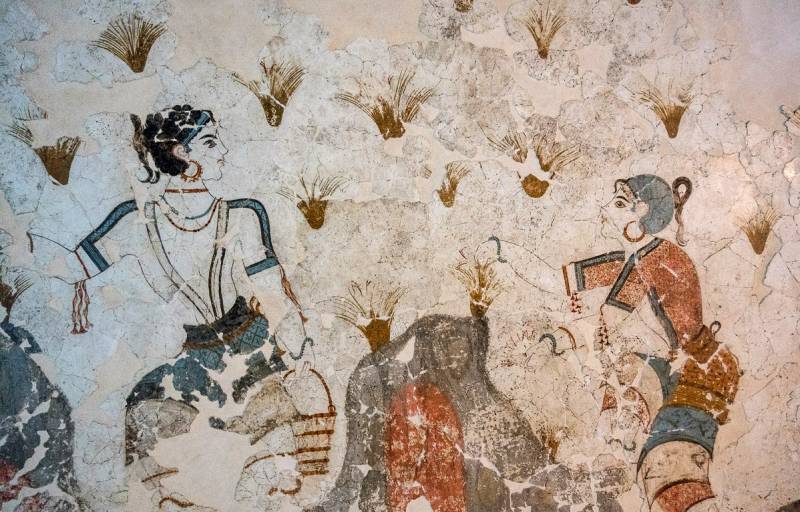
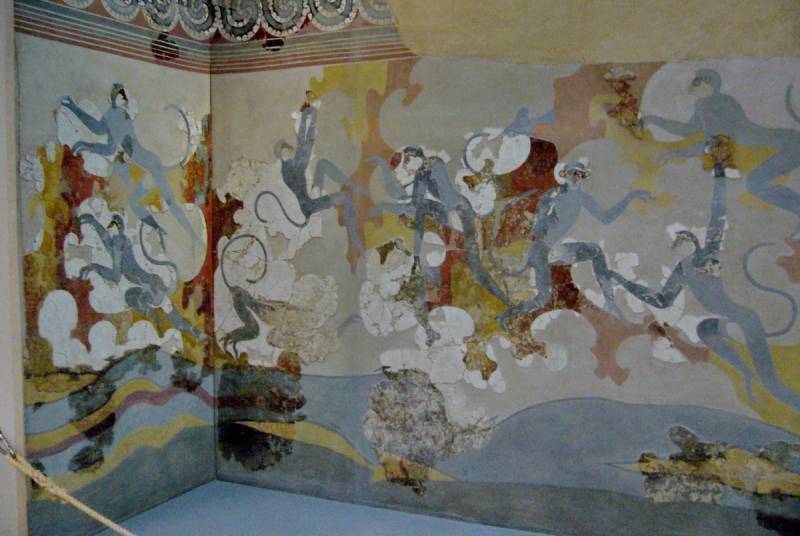
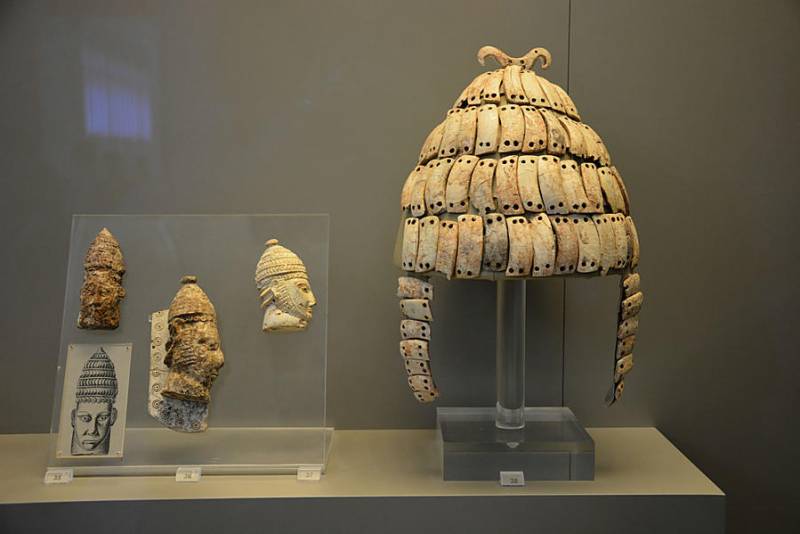
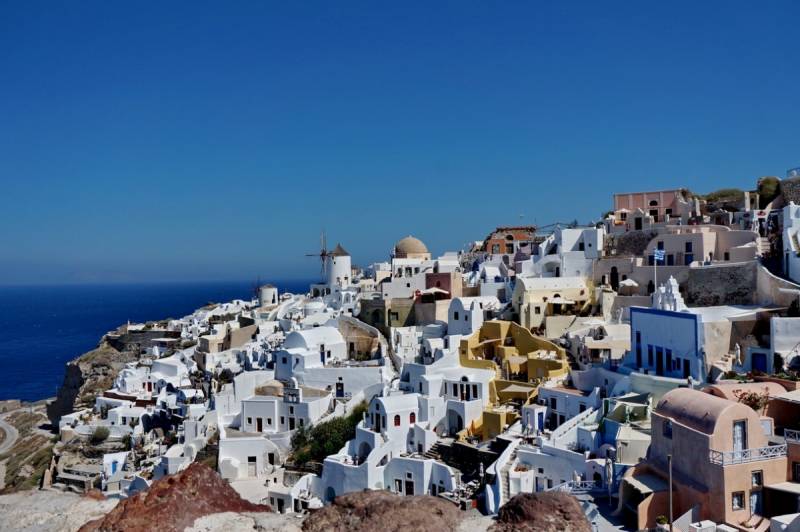
Information